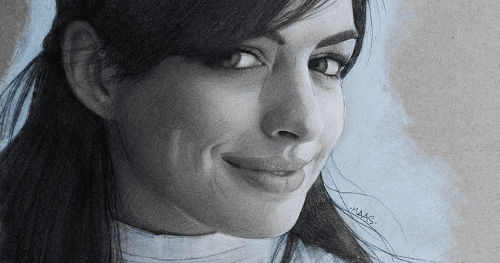
Artist Justin Maas is well known for his stunning portrait drawings and the way he uses form, line and light to render his pieces. He is a full time professional illustrator, fine artist and graphic designer, and we are proud to call him a Strathmore Ambassador. We sat down with Justin to get some insight on his work.
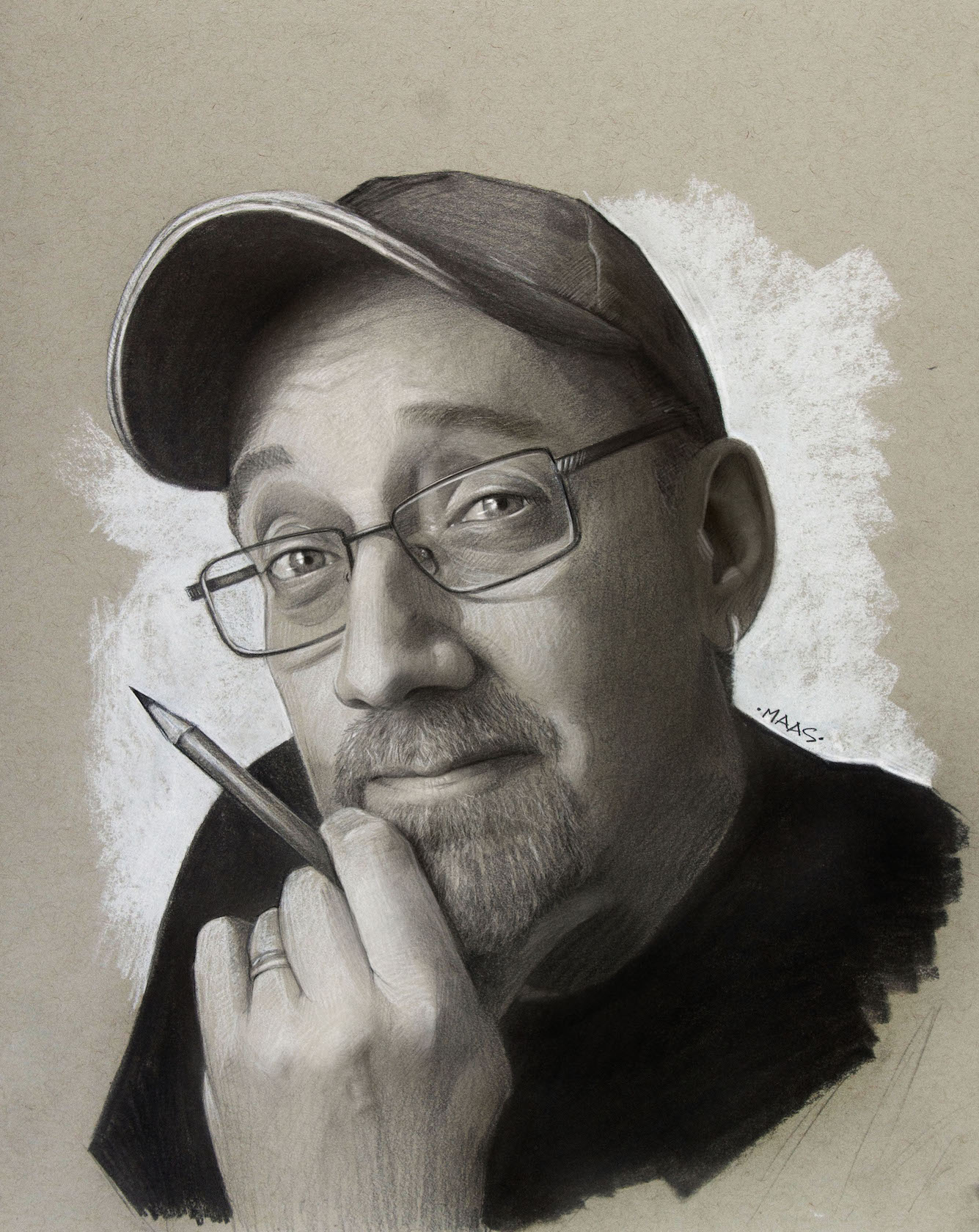
Justin Maas Self Portrait – graphite and charcoal on Strathmore Toned Paper
How and when did you get into art?
This is a question I – and all artists – get asked a lot – but the reality is: Every kid draws if given a chance. At some point, we find other interests; baseball, music, reading, video games – whatever – something that is more interesting than drawing.
Those of us who never find something more interesting… become artists. So, I never really “got into art” – I have always been into art – it’s just part of me.
What’s your favorite piece of art that you’ve created? Why?
Its hard to come up with a single piece – maybe a top 10 – but if I had to pick ONE it is this painting (Shelter from the Storm) which not only didn’t look like this, originally, but almost was completely abandoned.
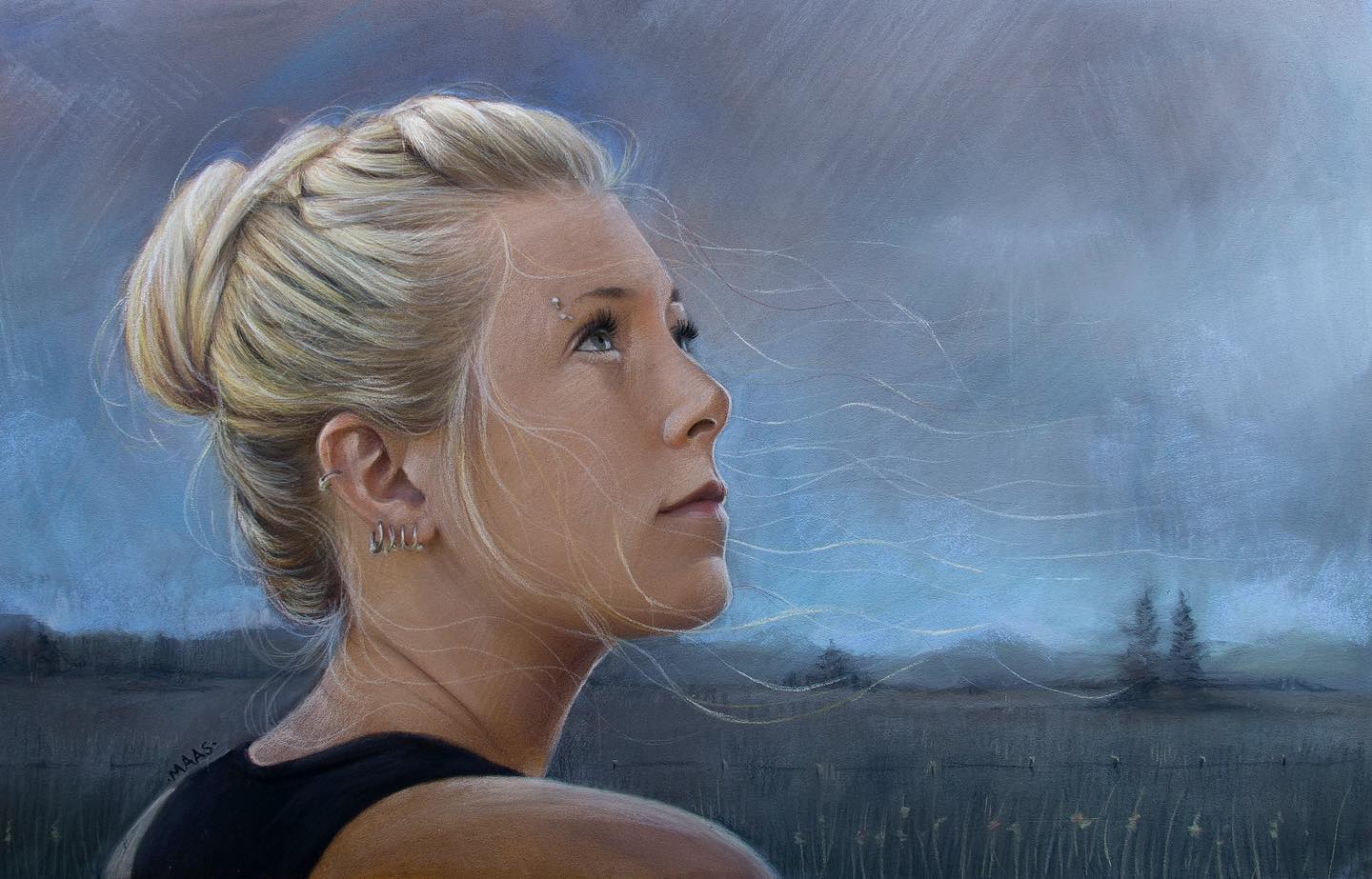
Originally, I had the portrait more or less the same on the page but the background wasn’t working at all. There were birds flying and a brighter feel that just didn’t feel in sync with the pensive expression of the model.
I nearly threw it out (in fact, I think I was in my scrap pile for a few weeks) but then I had an epiphany and rescued it. I took an old toothbrush and a shop vac and meticulously scraped away and vacuumed up the background.
Reinvigorated, I saw a new vision for the piece and “Shelter from the Storm” was born.
What’s the best piece of art advice you’ve been given?
Robert Bateman once told me (paraphrasing) “The first 10 percent of creating a piece of artwork is pure joy. The last 10% is euphoria… everything in between is boring, unadulterated work.”
As artists we are conditioned to think we should love every minute of working on a piece but there’s a reason it’s called “Artwork” and not “Artplay.” It IS work. And that “80% in the middle” can be a whole lot of hard work – not always of the enjoyable kind.
My pro tip: if you’re not feeling into a piece, starting a new one (or at least working through thumbnails and compositional sketches) can get you motivated & help you go back to that first piece and get through the slog of the ‘middle part of the painting.’ This is why I often have dozens of pieces on the go at once – all in various stages of completion.
What’s one art tip/technique you can share with us that you find really helpful?
A lot of artists ask me how I blend white charcoal and graphite (like when I work on toned paper like Strathmore toned tan or gray or blue) the answer is: I don’t.
You can’t blend those 2 mediums! They don’t play well together at all. What you have to do is layer them so they are *almost* touching hatching into one another.

It *is* possible to add a light layer of graphite (sparingly) over top of white charcoal but the reverse is not true. If you get to a point where they are blending together & start to “blue” then you need to erase that area & start over.
Using these 2 mediums together can be tricky and frustrating but its is worth it. There is no dry medium that can give the details of graphite and there’s no white out there as intense as white charcoal (or white pastel) so you have to live with the fact that they don’t really get along on the page.
Who are your favorite celebrities to draw and why?
The funny thing is, I don’t particularly love drawing celebrities (says the guy who’s done over 1000 of them) it has just always been such a great way to get visibility as a portrait artist – and has led to so many great projects. The idea was initially borne out of wanting to show that I could capture a likeness but once I had done a few it became apparent that there was a lot of interest in me doing so, so I continue to draw them.
First and foremost, I like drawing interesting faces (Pedro Pascal, Anne Hathaway and Emma Watson all come to mind) but really it’s all about what mood strikes me at the time -and the reference photo I may have of that person.
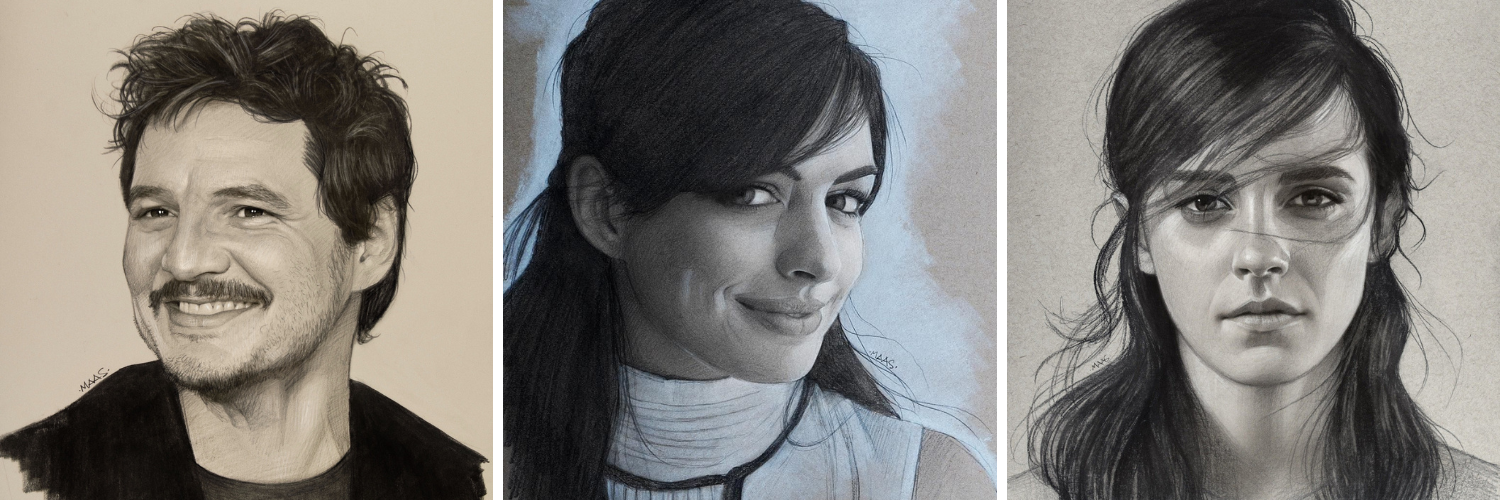
What do you look for in a reference photo before creating a portrait?
In a perfect world, I work from life or shoot my own reference but obviously I rarely get the chance to work directly with a celebrity so for that series I generally look for two things: contrast and angle.
I like images with more contrast, less diffused lighting and I also like photos that are more ¾ view – not straight on. Having said that, quality – ie: resolution – is a huge factor too. If I can’t draw the person from life, being able to see facial planes and details are crucial.
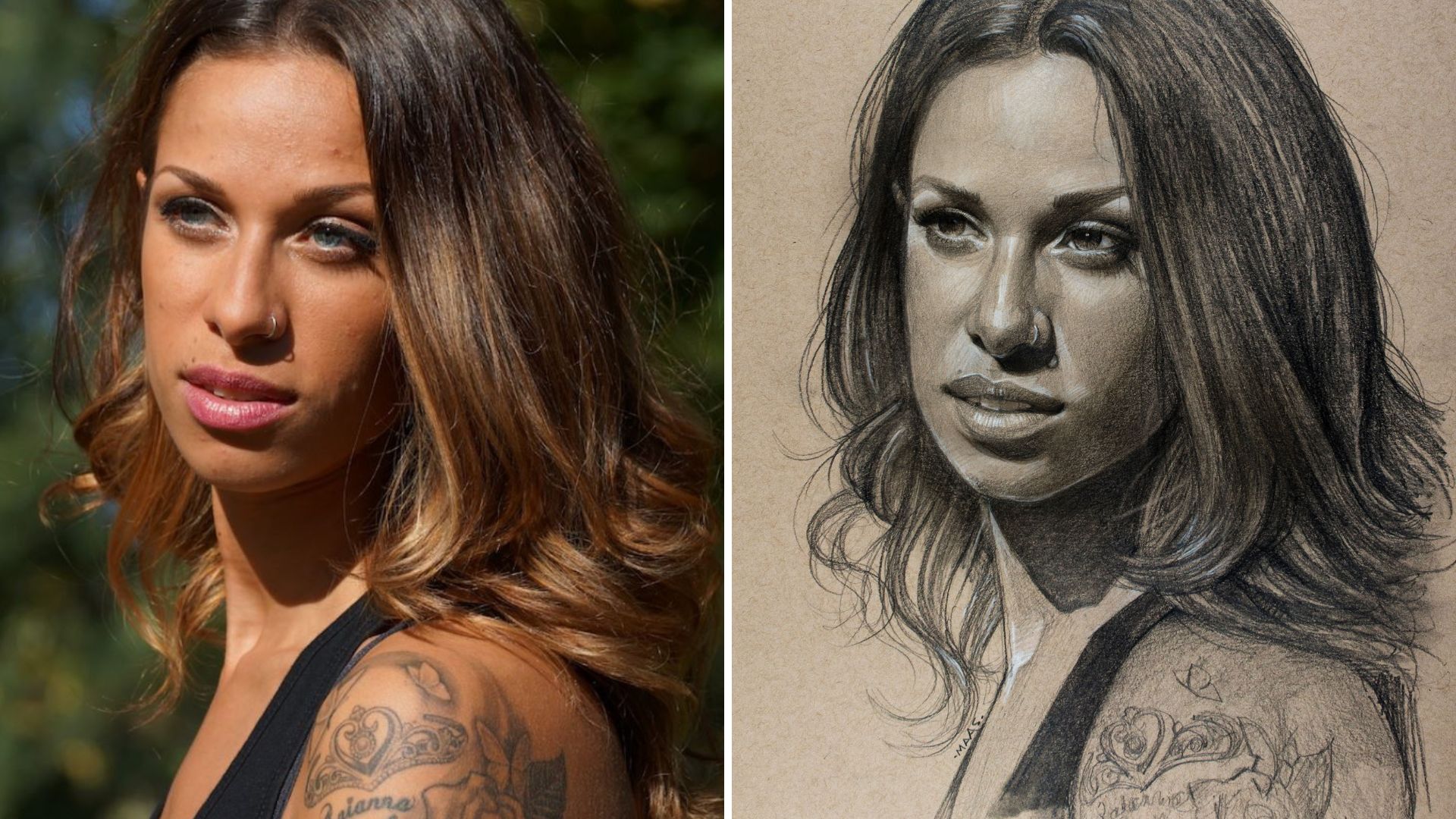
What is your favorite Strathmore paper? Why?
That’s a tough question to answer. I love a lot of the Strathmore lines. I would probably say it’s a 3 way tie:
400 Series Toned Sketch: (Gray, Tan and Blue are all great) I love the feel, the texture and the way it accepts light and dark at once. This is my go-to paper for many, many projects
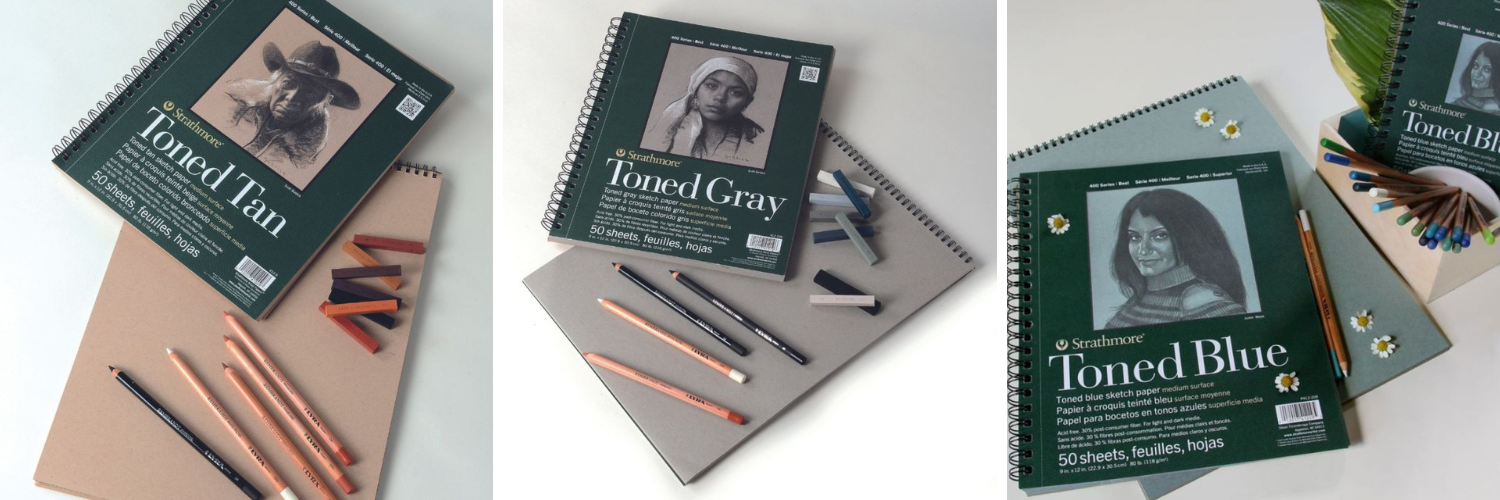
500 Series Bristol Plate: this is an absolutely stunning paper for almost any graphite project. I tend to use this more than any other paper when it comes to commissions.
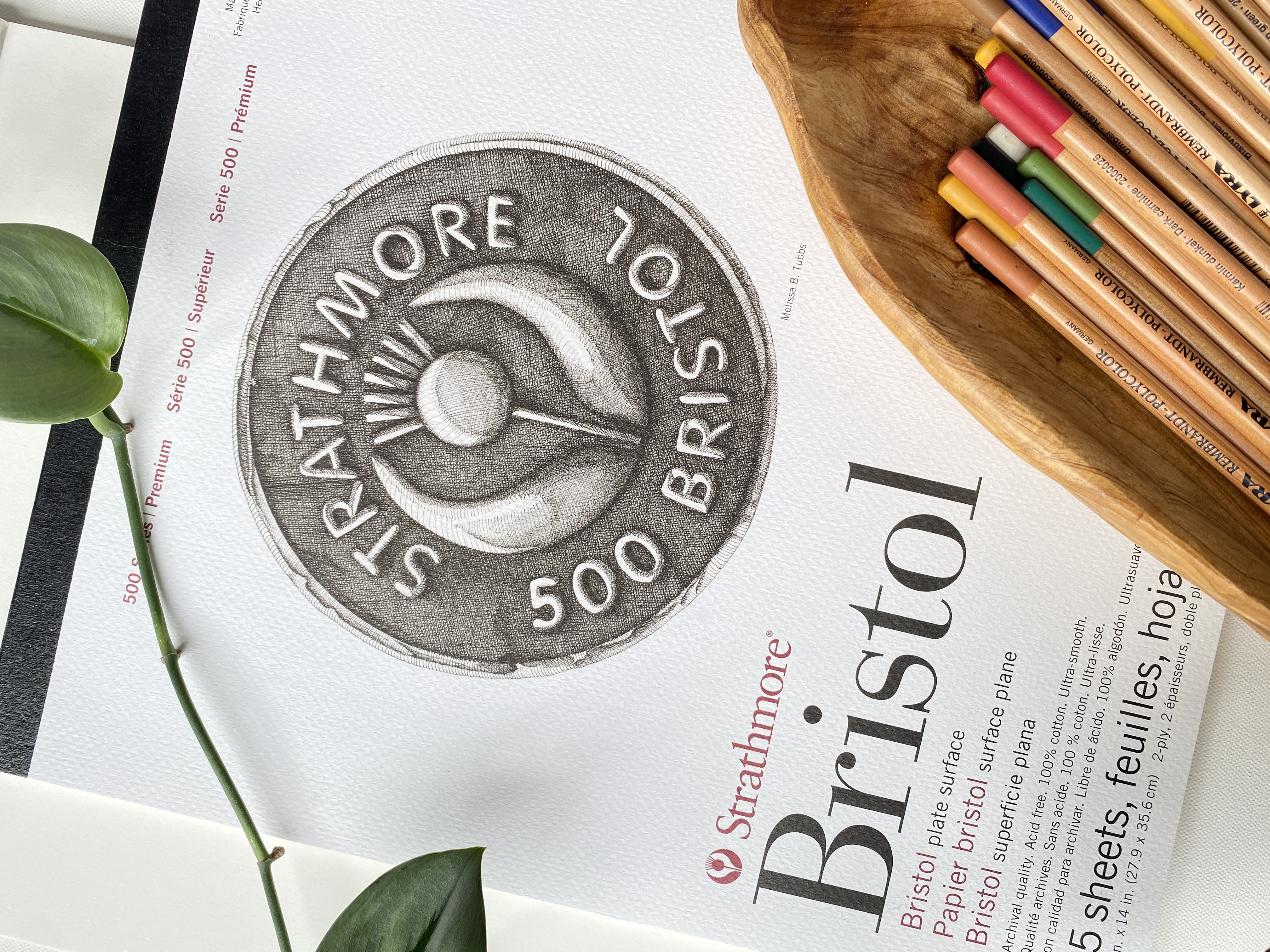
400 Series Smooth Drawing Paper: another great overall graphite paper. I find it is one of the best choices for drawings that feature a subject with less contrast and more diffused light. It’s a little off-white compared to the bristol which is nice for certain applications.
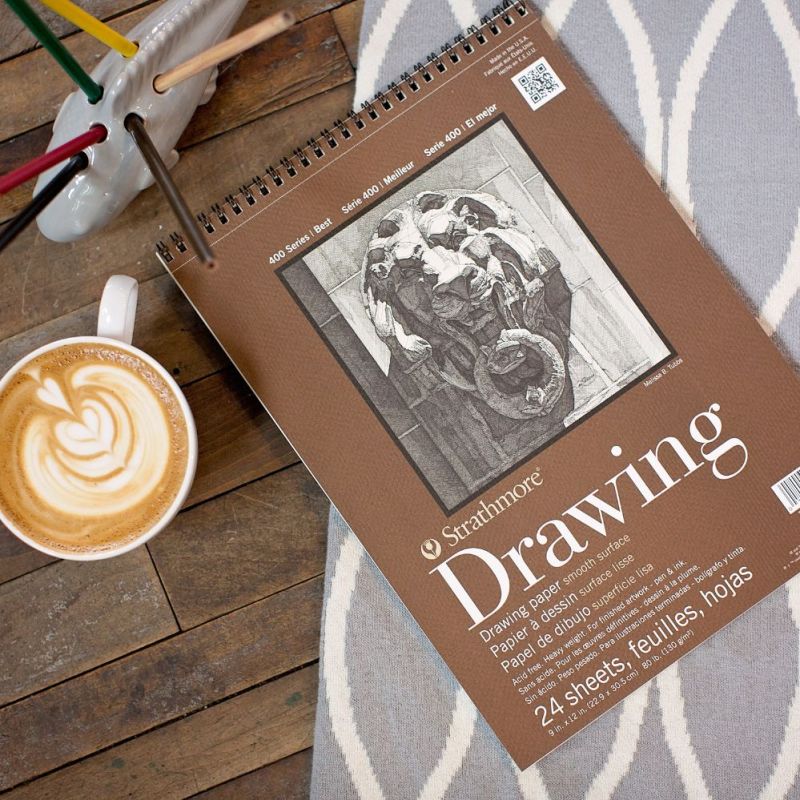
What’s the most common art-related question you get from your followers, and what’s the answer?
“How long did that take” which is such a tough question to answer. Not because I don’t know (although honestly, I don’t time myself and often work on multiple drawing in one day so I don’t really pay attention to how long it does take) but because my answer is almost certainly misleading.
I could say “3 hours” which may constitute the time between when the paper was bare & the time I signed it – but that only tells a small portion of the story.
It doesn’t take into account the years- no, decades of practice that came first. A drawing that takes me 3 hours now may have taken me 5 a couple of years ago, and perhaps 20 or 30 hours a decade before. And ultimately, its not important – a drawing takes as long as it takes -but I hate answering it for the main reason that I don’t want an artist just starting their artistic journey to be discouraged. “3 hours? That would take me 3 weeks!” because we should never compare ourselves to other artists, only to ourselves a week, a month, a year before.
So sometimes I think the right answer is “it took me 30 years to be able to draw that” although I know that’s not the answer the casual follower was looking for!

See more from Justin: @maas.art







